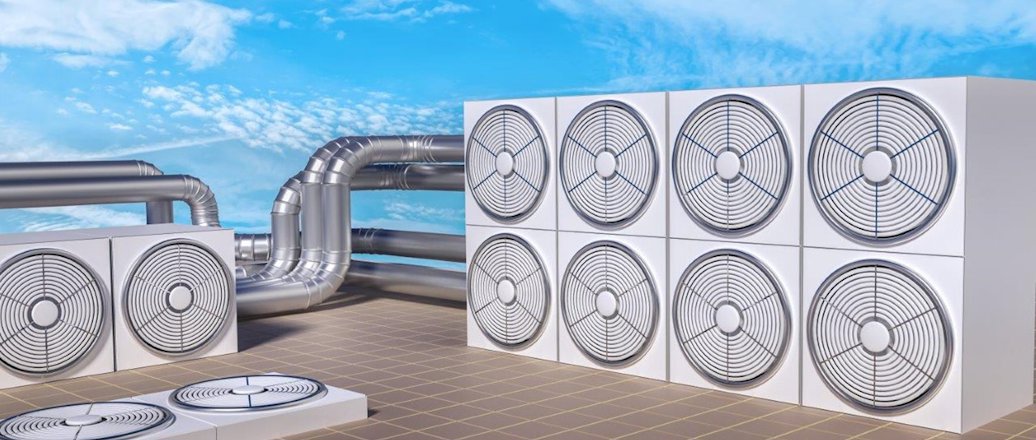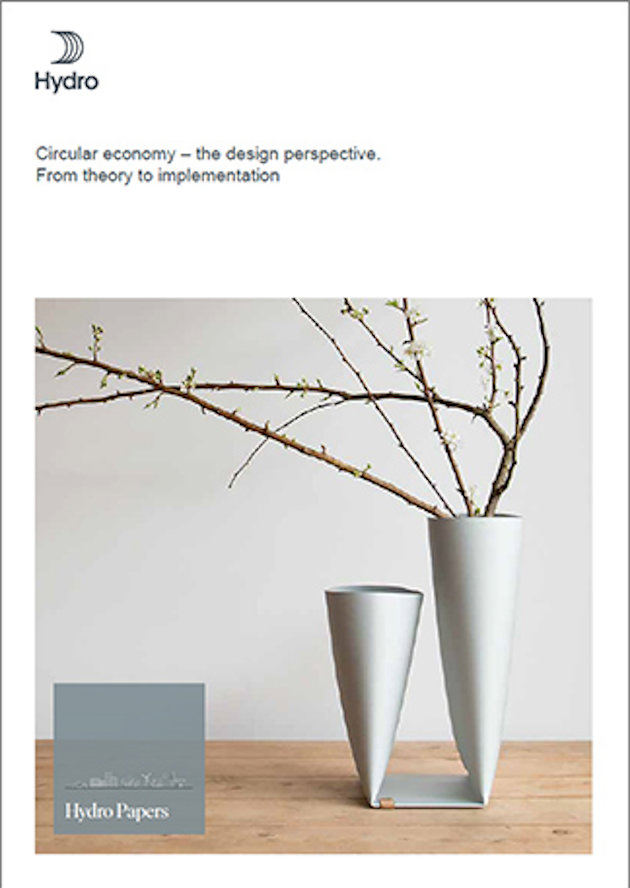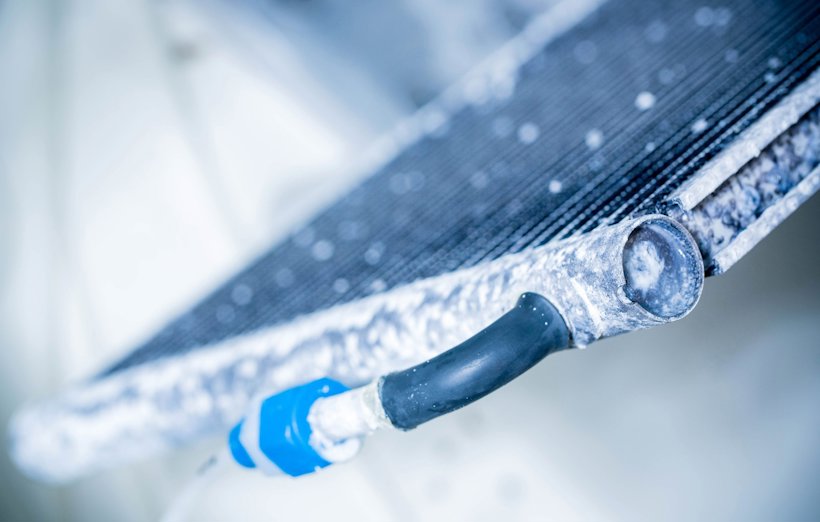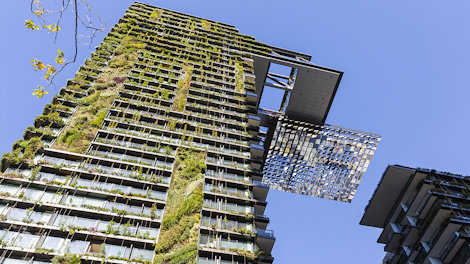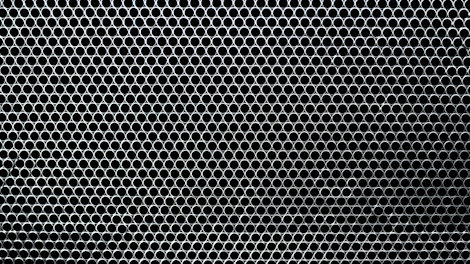HVAC systems provide a comfortable environment, both when it comes to temperature and humidity, as well as clean air indoors. Naturally, the size and power of these systems vary depending on the size of the area they regulate. This can be in both domestic settings as well as in commercial spaces such as airports, offices, and in the industrial and hospitality industries. The design differs depending on their application and the functions of the building or vehicle.
Aluminium and HVAC systems – a perfect fit
Having a good air quality and temperature in (large) workspaces ensures a pleasant and healthy workplace. Aluminium parts can be integrated in indoor parts of the HVAC systems in the form of heat sinks and/or housings for boilers, vents and more. In addition, some of these heating and cooling systems are located on the outside of buildings.
The right choice of material and possible surface treatment is essential to prevent corrosion and extend the life of a product. This is not the only benefit aluminium has to offer. It is a metal with many qualities which benefit HVAC systems perfectly. Benefits such as:
- Corrosion resistance during outdoor use, and indoors when in contact with liquids and/or condensation
- Good surface quality and appearance
- Durability
- Sustainability
- Good strength-to-weight ratio
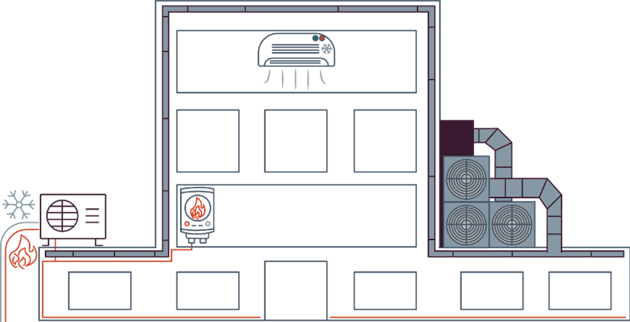
Different types of HVAC systems
Heating equipment
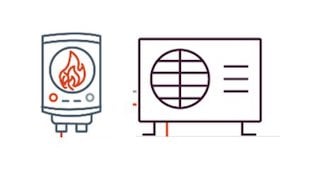 The purpose of heating equipment is to generate warmth for specific areas. These systems can consist out of various devices such as heat pumps, furnaces, or boilers. The benefits aluminium offers regarding weight, corrosion resistance and more, lead to the frequent use of aluminium parts in this equipment.
The purpose of heating equipment is to generate warmth for specific areas. These systems can consist out of various devices such as heat pumps, furnaces, or boilers. The benefits aluminium offers regarding weight, corrosion resistance and more, lead to the frequent use of aluminium parts in this equipment.
Ventilation equipment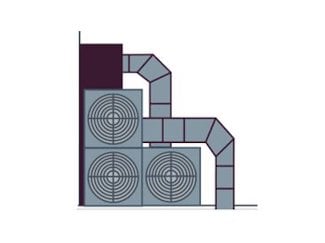 Ventilation equipment helps maintain air quality in indoor areas. Aluminium is frequently used in these devices, which vary from air handling units that form the central part of an air conditioning system and circulate the air, to air purifiers and filters that capture or neutralize pollution that is harmful to clean inside air, and to (de)humidifiers, which either add or extract moisture from air.
Ventilation equipment helps maintain air quality in indoor areas. Aluminium is frequently used in these devices, which vary from air handling units that form the central part of an air conditioning system and circulate the air, to air purifiers and filters that capture or neutralize pollution that is harmful to clean inside air, and to (de)humidifiers, which either add or extract moisture from air.
Cooling equipment
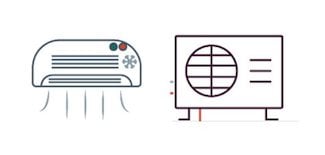 Cooling equipment keeps temperatures from exceeding limits depending on needs, safety and efficiency. Examples of systems that include aluminium parts are room air conditioners, chillers and cooling towers. These systems have different mechanisms and purposes depending on the exact requirements of the area.
Cooling equipment keeps temperatures from exceeding limits depending on needs, safety and efficiency. Examples of systems that include aluminium parts are room air conditioners, chillers and cooling towers. These systems have different mechanisms and purposes depending on the exact requirements of the area.
Support from start to finish with the principles of Hydro EcoDesign
New buildings today are designed with sustainability in mind. A building's climate system is an important part of sustainable building design, as heating and cooling systems are a major source of energy consumption. Due to increasingly extensive environmental legislation, which also affects the recycling possibilities of products, you may look for ways to optimize your products.
We can support you in developing HVAC products and improving your design by applying the principles of Hydro EcoDesign. Principles which aid in developing greener solutions that offer carbon footprints lower than the norm, longer durability and better performance. In this way, you are guaranteed a product that meets the latest sustainability standard, and one that can easily be disassembled, repaired or replaced, and finally recycled.
We can provide you with help each step of the way, from the initial design to the final delivery.
Updated: 29 November 2022







